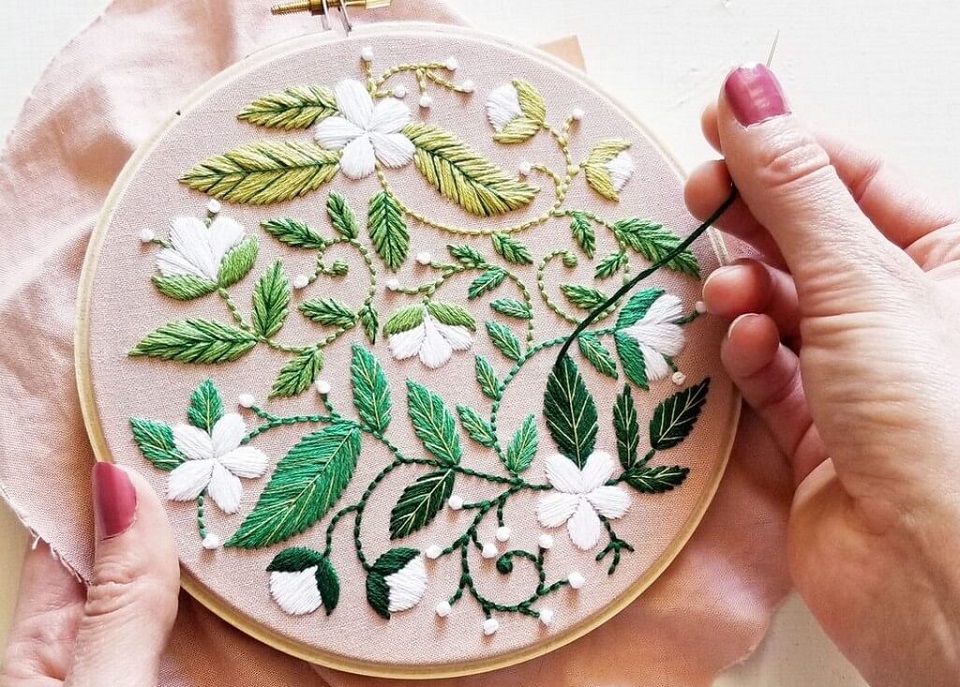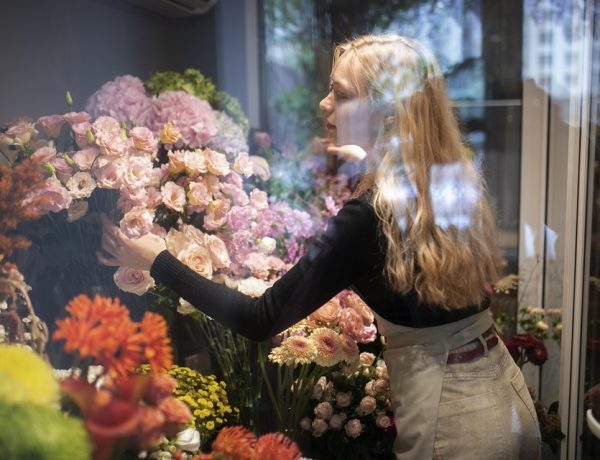Table of Contents
An embroidery is a form of decorative art that uses threads, beads, and other materials to create a pattern. There are different kinds of embroidery, such as Cutwork, Crewel, Glow-in-the-Dark, Drawn thread work, and Synthetic metallic. All these types of embroidery are used to create different types of artwork.
Drawn Thread Work
This embroidery technique involves removing threads from a woven fabric. It is one of the oldest forms of open-work embroidery. The stitches are tied together to hold the threads in place. The thread is pulled along the grain line of the fabric.
The technique can be applied to any fabric. However, the best results are achieved with a smooth plain-weave structure. Drawn thread work is traditionally done on a white thread on white fabric.
The stitches are often decorative but may be used to create more elaborate designs. These stitches include a four-sided stitch, a single faggot stitch, and an Italian hemstitch.
Cutwork
Creating cutwork embroidery can be intimidating. It would be best if you utilized various sewing machines, which can take a lot of time. But with the appropriate methods, it might be simple.
Before creating your cutwork embroidery, you must prepare your materials. The best materials to use are cotton and silk. Linen and satin are also good choices for beginners.
You’ll need unique markers to mark the fabric. You can also use a pencil. The next stage is finding a way to incorporate the pieces into your design. Finding out how many threads per inch you require is part of this.
Before cutting your fabric, it’s vital to decant it. It helps prevent it from shrinking during the washing process. You should also check the thickness of the fabric. If it’s too thin, it will cause the threads to spread out.
Free-Motion
Creating a free-motion embroidery piece is a fun and easy task. Just remember to use a free-motion foot.
You will also need to stabilize your fabric. A suitable stabilizer will hold your fabric in place while you stitch. A suitable stabilizer will also help prevent your fabric’s kink and puckering.
Free-motion embroidery should be done at medium to high speed, which is the most crucial thing to keep in mind. Too slow, and you will lose control of your fabric. You may also break some of your stitches.
You can experiment with a variety of free-motion stitching threads. The sort of fabric you intend to sew on will determine the ideal thread for your project. Additionally, A Thread of Blue, which will produce a silky, smooth shine, is necessary.
Crewel Embroidery
Embroidery has been around for centuries, and crewel embroidery is one of the oldest styles. It is a unique embroidery technique that uses thick wool threads. These threads provide stitching with a thick feel and depth.
In the past, crewel embroidery was used to cover bed hangings and curtains. It was also used to create upholstered items. Today, crewel embroidery is a widely used technique. Modern crewel motifs include birds, insects, and animals. Embroidery artists often combine wool threads with other fibers to create unique and stylish embroidery.
Traditional crewel work is often done on linen twill. This fabric is sturdy and allows the crewel wool to pass through easily.
Glow-In-The-Dark
Embroidery threads in the glow-in-the-dark variety are perfect for Halloween, fancy dress, and children’s pajamas. They are also great for quilting, decorative stitching, and upholstery. They can be purchased online or at a sewing or craft store.
Glow-in-the-Dark embroidery threads come in a variety of colors. The most common are yellow, orange, green, blue, and white. They are made from fluorescent material and glow when exposed to light.
Some glow-in-the-dark embroidery threads are made of plastic, cotton, or other materials. These threads are also treated to absorb light. They are safe for low heat and washing. They should last many washes.
Glow-in-the-Dark threads can be purchased in sets of 22 or 40 colors. The threads glow when they are exposed to light for at least five minutes.
Synthetic Metallic
Embroidery using a metallic thread is a great way to add dimension to your stitched designs. These threads are perfect for various projects, including cross stitch, needlepoint, and quilting. However, there are some issues to consider when using metallic thread.
First, metallic thread is more malleable than other thread types. This can lead to looping, knotting, and fraying. Additionally, a metallic thread can also be challenging to clean. It should not be used with steam or high heat.
Another problem with metallic thread is its tendency to break. It is due to the friction of the thread when it comes in contact with the surface it is being used on. Another problem is thread twisting when it comes off the spool. It can result in kinks when hand sewing and large knots using an embroidery machine.





No Comments